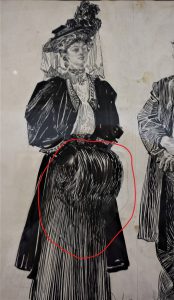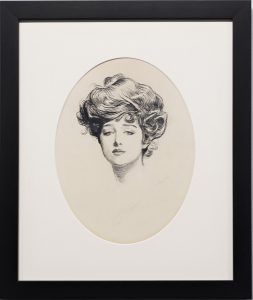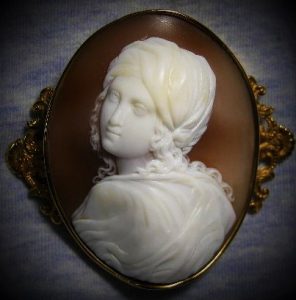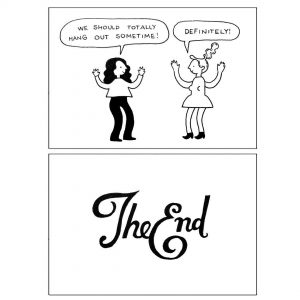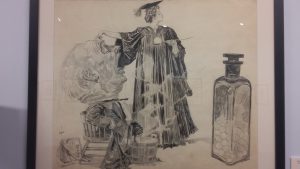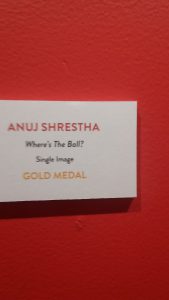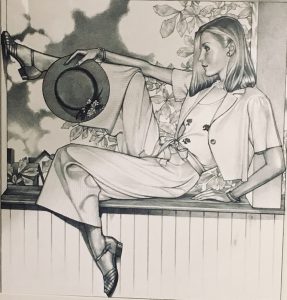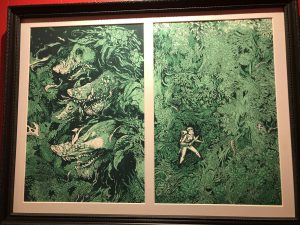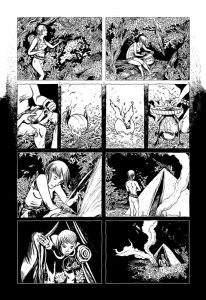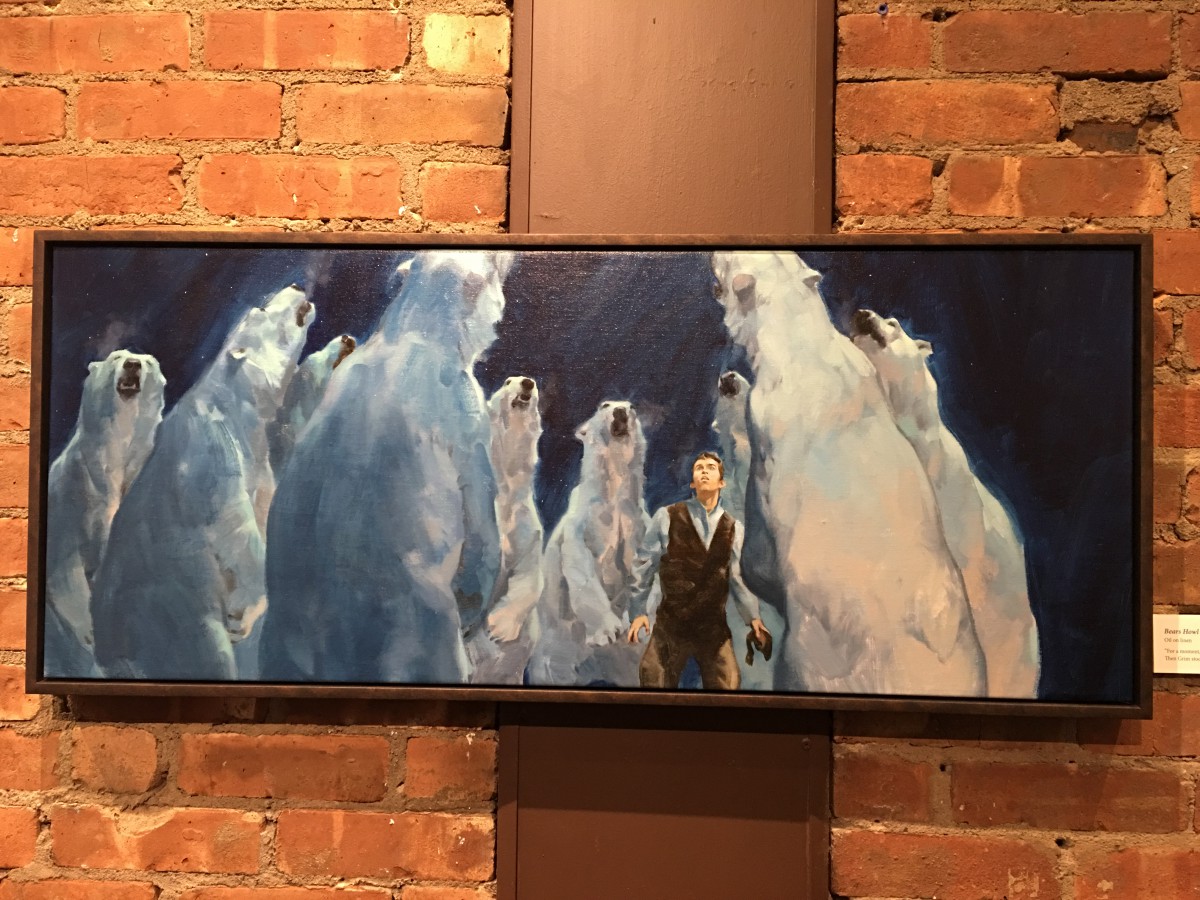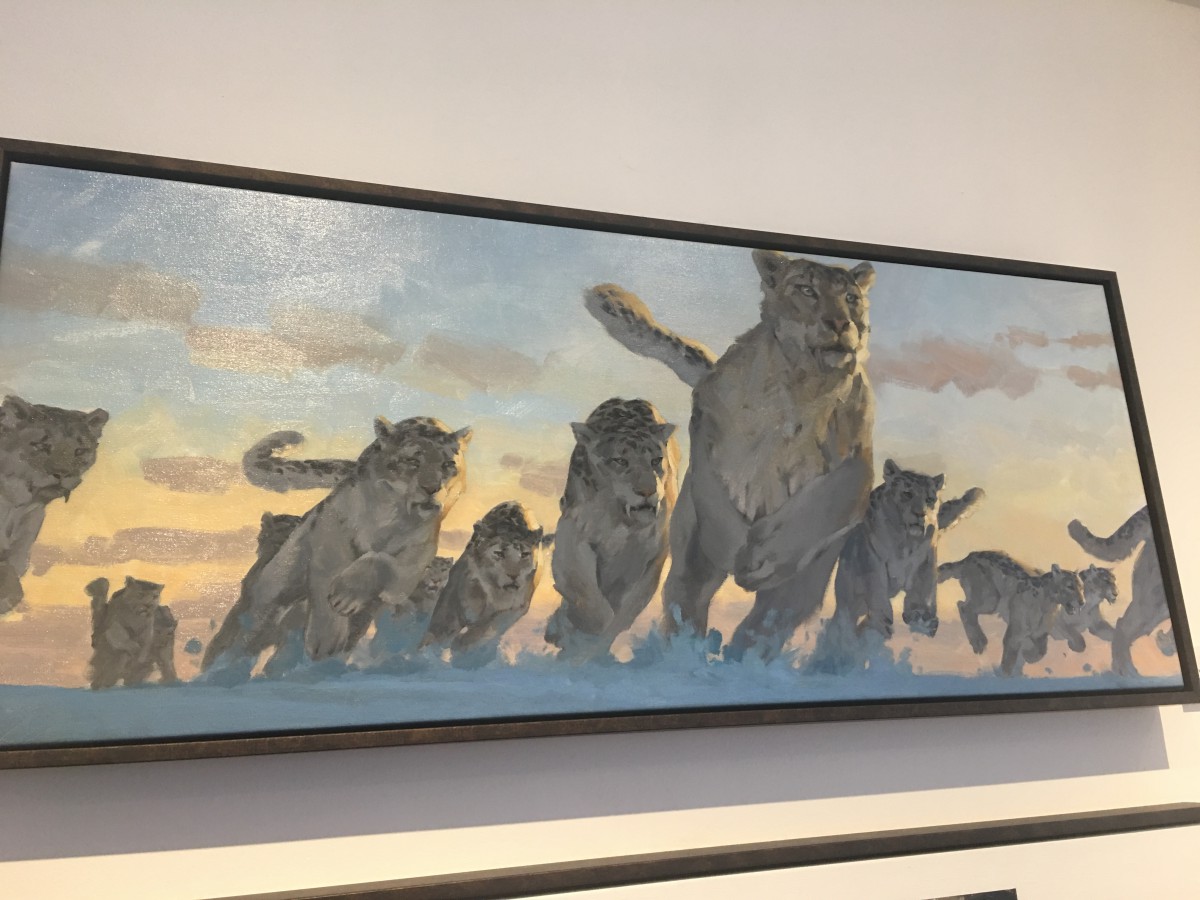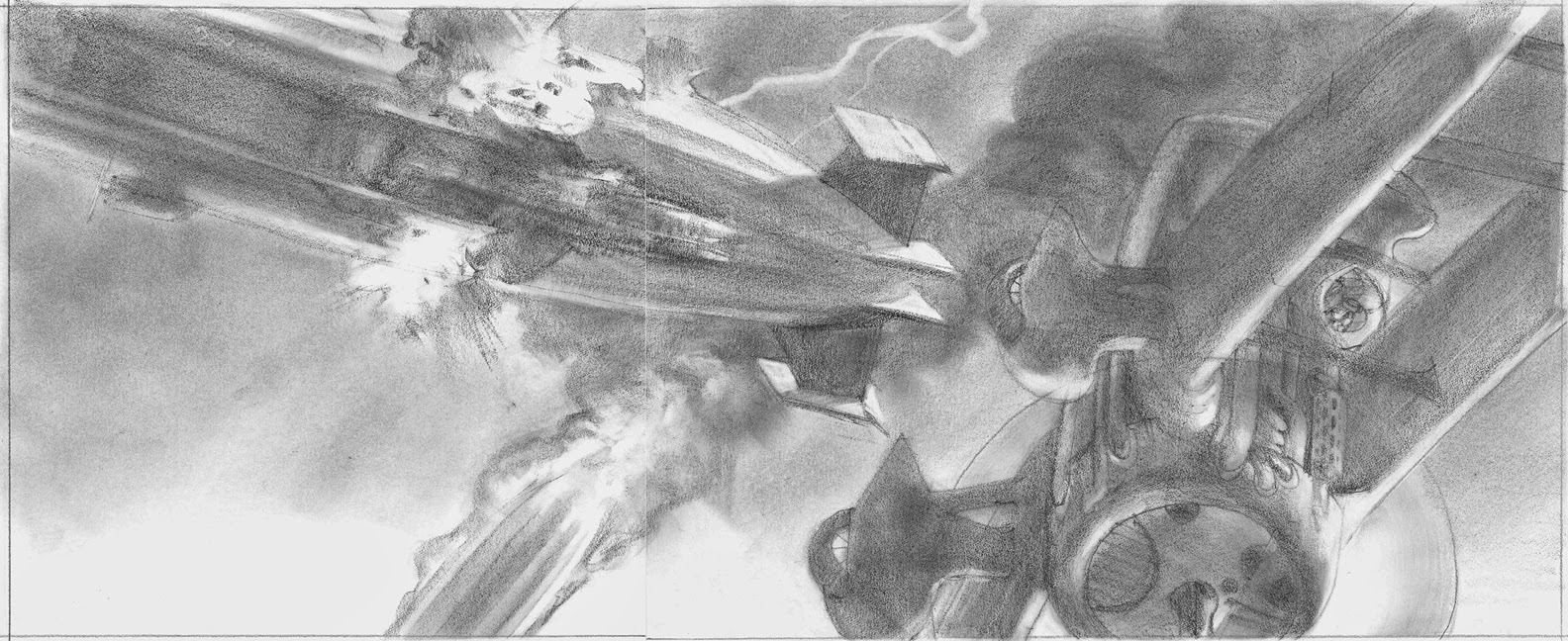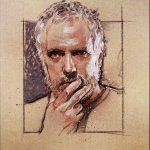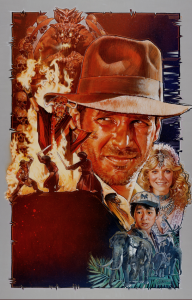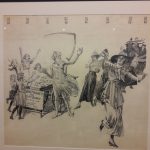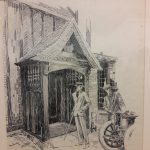Visiting the Society of Illustrators was very inspiring. The illustrations that I was inspired the most was done by Orson B. Lowell specially “Family arrives at party on the wrong evening”. The illustration is about a fancy-dressed up party that turned out to be unexpected. Lowell’s work made me realize that there is no limits when it comes to drawing. He used three sheets of drawing paper and put them together as one final drawing which I never thought I would see such technique. It is amazing how he perfectly continued to the next page as if he never left the first.
I always thought that this type of illustration wouldn’t have any mistakes until I saw white spots with corrections through the drawings. That shows that every illustrator have a tough time to come up with a perfect art work. Lowell shows humor by the expression shown on the people’s face when they see their family on costumes. Furthermore, Lowell’s ways of drawing has taught me how amazing it is to work with ink by just doing cross hatching with lines although it takes a lot of practice and dedication to make a perfect piece of art.



